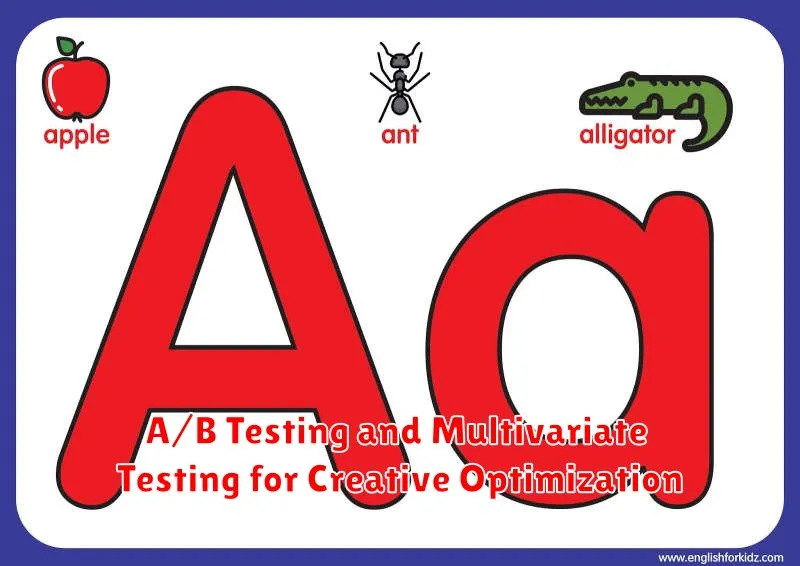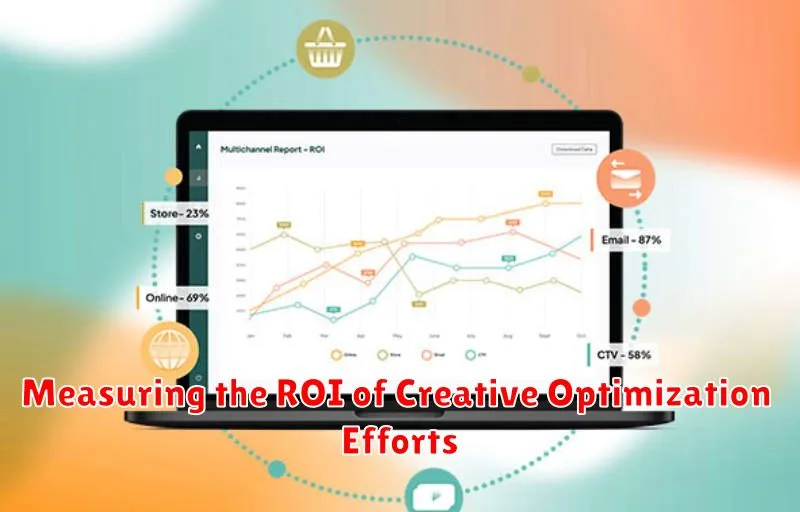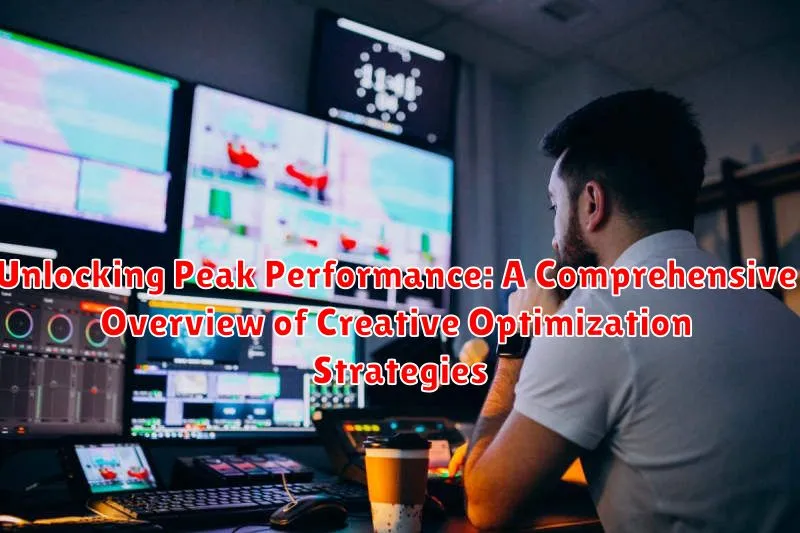Welcome to a deep dive into Unlocking Peak Performance: A Comprehensive Overview of Creative Optimization Strategies. In today’s dynamic business landscape, achieving peak performance is paramount for success. This article will serve as a foundational guide to understanding and implementing various creative optimization strategies that can dramatically improve efficiency, innovation, and overall business outcomes. We will explore actionable insights applicable across diverse industries, empowering you to leverage creativity as a strategic advantage and achieve sustainable growth.
The concept of creative optimization extends beyond traditional marketing and advertising. It encompasses a holistic approach to problem-solving, process improvement, and product development. This overview will delve into methodologies such as design thinking, agile workflows applied to creative processes, and data-driven creative decision-making. By understanding these strategies, you can equip your teams with the tools and frameworks necessary to consistently deliver exceptional results and maintain a competitive edge in the global marketplace.
What is Creative Optimization and Why is it Important?
Creative optimization is the systematic process of enhancing the effectiveness of creative assets—such as advertisements, website content, and marketing materials—to achieve specific goals. This involves analyzing performance data, identifying areas for improvement, and implementing changes to maximize impact.
The importance of creative optimization stems from its direct influence on key performance indicators (KPIs). By refining creative elements, businesses can drive higher click-through rates (CTRs), conversion rates, and ultimately, return on investment (ROI). In today’s competitive digital landscape, generic or poorly performing creative can lead to wasted ad spend and missed opportunities.
Specifically, creative optimization enables businesses to:
- Improve ad relevance: Tailoring creative to resonate with target audiences.
- Reduce bounce rates: Engaging users with compelling content.
- Increase brand engagement: Fostering stronger connections with customers.
- Lower acquisition costs: Achieving more efficient customer acquisition.
Effective creative optimization is not a one-time fix but an ongoing process of testing, learning, and refining to ensure creative assets consistently deliver optimal results.
Key Elements of Effective Creative Optimization
Effective creative optimization hinges on several crucial elements that, when combined, contribute to enhanced performance and engagement. These elements ensure that creative assets resonate with the target audience and achieve desired outcomes.
Compelling Visuals
High-quality images and videos are essential. Visuals should be relevant, attention-grabbing, and aligned with the brand’s identity. Consider factors like color palettes, composition, and resolution to create a strong visual impact.
Persuasive Messaging
The messaging should be clear, concise, and tailored to the target audience. Highlight key benefits, use strong calls to action, and ensure that the language resonates with the audience’s needs and desires.
Strategic Placement
Where and how the creative is displayed significantly impacts its effectiveness. Consider placement on websites, social media platforms, or within email campaigns, optimizing for visibility and relevance.
Audience Targeting
Understanding your audience is paramount. Target your creative to specific demographics, interests, and behaviors to ensure it reaches the most receptive audience.
Mobile Optimization
With the prevalence of mobile devices, it’s crucial to optimize creative assets for mobile viewing. Ensure that visuals are responsive, text is legible, and the overall experience is seamless on smaller screens.
A/B Testing and Multivariate Testing for Creative Optimization

A/B testing, also known as split testing, is a method of comparing two versions of a creative asset (A and B) to determine which one performs better. This involves randomly showing version A to one segment of your audience and version B to another, then analyzing which version achieves a statistically significant improvement in a chosen metric, such as click-through rate or conversion rate.
Multivariate testing, on the other hand, tests multiple variations of several elements within a creative simultaneously. This approach allows for a more comprehensive understanding of how different combinations of elements impact performance. While more complex to execute, multivariate testing can reveal subtle interactions between design elements that A/B testing might miss. It is crucial for uncovering the optimal combination of creative components for maximum impact.
Both A/B and multivariate testing are essential tools for data-driven creative optimization, enabling marketers to make informed decisions based on empirical evidence rather than intuition. These testing methodologies allow for continuous improvement and refinement of creative assets, ultimately leading to enhanced campaign performance and a higher return on investment.
Data-Driven Insights for Creative Improvement
Data-driven insights are the cornerstone of effective creative optimization. By meticulously analyzing performance data, marketers can uncover patterns, trends, and opportunities to enhance their creative assets.
Leveraging Analytics Platforms
Utilize robust analytics platforms like Google Analytics or Adobe Analytics to track key performance indicators (KPIs) such as click-through rates (CTR), conversion rates, bounce rates, and time spent on page. These metrics provide valuable feedback on how users are interacting with your creative elements.
Understanding User Behavior
Go beyond surface-level metrics and delve into user behavior. Heatmaps, session recordings, and user surveys can offer qualitative insights into why certain creative approaches resonate better than others. Identify areas where users are experiencing friction or disengagement.
Iterative Improvement Process
Data insights should fuel an iterative improvement process. Regularly review your data, identify areas for optimization, implement changes, and then measure the impact of those changes. This cycle ensures continuous improvement and helps you stay ahead of evolving audience preferences.
Personalization and Dynamic Creative Optimization
Personalization and Dynamic Creative Optimization (DCO) represent advanced strategies for enhancing marketing effectiveness by tailoring creative content to individual users in real-time. This approach moves beyond broad segmentation to deliver highly relevant and engaging experiences.
Personalization involves using data about users—such as demographics, browsing history, and purchase behavior—to inform creative decisions. This ensures that users are presented with ads and content that resonate with their specific needs and interests.
DCO takes personalization a step further by automatically adjusting creative elements—including headlines, images, and calls-to-action—based on real-time data and machine learning algorithms. This iterative process continuously optimizes creatives to maximize performance.
Benefits of Personalization and DCO
- Increased engagement rates
- Improved conversion rates
- Enhanced customer loyalty
- Higher return on ad spend (ROAS)
The Role of User Experience (UX) in Creative Performance
User Experience (UX) plays a pivotal role in determining the success of creative assets. A positive UX ensures that users can easily navigate and interact with your creative content, leading to increased engagement and conversions. Conversely, a poor UX can frustrate users, leading to high bounce rates and diminished brand perception.
Key UX elements that impact creative performance include:
- Clarity: Is the message clear and easy to understand?
- Navigation: Is it easy for users to find what they are looking for?
- Accessibility: Is the creative accessible to all users, including those with disabilities?
- Responsiveness: Does the creative adapt well to different devices and screen sizes?
- Load Time: Does the creative load quickly and efficiently?
By prioritizing UX design principles in the creative optimization process, businesses can create engaging experiences that resonate with their target audience and drive meaningful results.
Tools and Technologies for Streamlining Creative Optimization
Effective creative optimization hinges on leveraging the right tools and technologies. These resources can significantly streamline workflows, enhance collaboration, and provide valuable insights into creative performance.
Project Management and Collaboration Tools
Platforms like Asana, Trello, and Monday.com facilitate task management, team communication, and project tracking, ensuring that creative optimization efforts remain organized and aligned with strategic goals.
A/B Testing Platforms
Tools such as Optimizely and VWO enable the systematic testing of different creative variations, providing data-driven insights into which elements resonate most effectively with the target audience.
Analytics and Reporting Tools
Google Analytics and similar platforms offer comprehensive data on user behavior, allowing marketers to analyze the performance of creative assets and identify areas for improvement. These analytical tools provide a granular view of how users interact with your creative content.
Creative Automation Platforms
Solutions like Bannerflow and Creative Force automate the creation and management of digital advertising assets, increasing efficiency and reducing manual effort. They are very helpful for managing many ads in a campaign.
Common Pitfalls to Avoid in Creative Optimization
Effective creative optimization can be undermined by several common pitfalls. Avoiding these missteps is crucial for maximizing campaign performance and achieving optimal results.
Ignoring the Target Audience
A frequent mistake is failing to thoroughly understand the target audience. Creative elements should always resonate with the intended demographic, considering their preferences, behaviors, and needs. Generic or irrelevant creatives are unlikely to perform well.
Lack of Clear Goals and KPIs
Without clearly defined Key Performance Indicators (KPIs) and campaign objectives, it’s impossible to accurately measure success. Establish specific, measurable, achievable, relevant, and time-bound (SMART) goals before launching any optimization efforts.
Insufficient Testing
Relying on intuition rather than data-driven testing is a risky approach. Avoid making assumptions; instead, conduct thorough A/B or multivariate tests to identify the most effective creative variations.
Overlooking Mobile Optimization
In today’s mobile-first world, neglecting mobile optimization can significantly impact performance. Ensure creatives are responsive, load quickly, and provide a seamless user experience on all devices.
Ignoring Data Privacy Regulations
Failing to adhere to data privacy regulations (e.g., GDPR, CCPA) can lead to legal issues and damage brand reputation. Always prioritize user privacy and obtain necessary consent for data collection and usage.
Measuring the ROI of Creative Optimization Efforts

Demonstrating the return on investment (ROI) of creative optimization is crucial for securing continued investment and demonstrating its value. It requires a clear understanding of the key performance indicators (KPIs) being impacted by optimization efforts.
Identifying Relevant KPIs
Examples of KPIs to track include conversion rates, click-through rates (CTR), cost per acquisition (CPA), and customer lifetime value (CLTV). Selecting the most relevant KPIs depends on the specific goals of your campaigns and the stage of the customer journey you are targeting.
Attribution Modeling
Employing appropriate attribution models is essential to accurately credit creative optimization for its contribution to overall ROI. Consider using models such as first-touch, last-touch, linear, or time-decay to understand the impact of different touchpoints in the customer journey.
Calculating ROI
The basic formula for calculating ROI is: (Net Profit / Cost of Investment) x 100. In the context of creative optimization, “Net Profit” would be the incremental revenue or value generated by the optimized creatives, and “Cost of Investment” would be the expenses associated with the optimization efforts (e.g., testing tools, personnel costs). Present ROI data clearly and concisely to stakeholders.
Future Trends in Creative Optimization
The landscape of creative optimization is constantly evolving, driven by technological advancements and shifts in consumer behavior. Anticipating these trends is crucial for maintaining a competitive edge.
Artificial Intelligence (AI) and Machine Learning (ML) are poised to play an even larger role. Expect to see more sophisticated AI-powered tools that can automatically generate, test, and optimize creative assets at scale. These tools will analyze vast datasets to predict which creatives will resonate best with specific audiences.
Enhanced Personalization will move beyond basic demographic targeting. Future creative optimization will leverage more granular data points, such as real-time contextual information and individual user preferences, to deliver hyper-personalized experiences.
The Metaverse and Immersive Experiences will introduce new opportunities and challenges for creative optimization. Brands will need to adapt their strategies to create engaging and immersive content that resonates with users in these virtual environments.
Focus on Privacy-Preserving Techniques. As data privacy regulations become more stringent, expect to see greater emphasis on creative optimization strategies that minimize data collection and prioritize user privacy.

